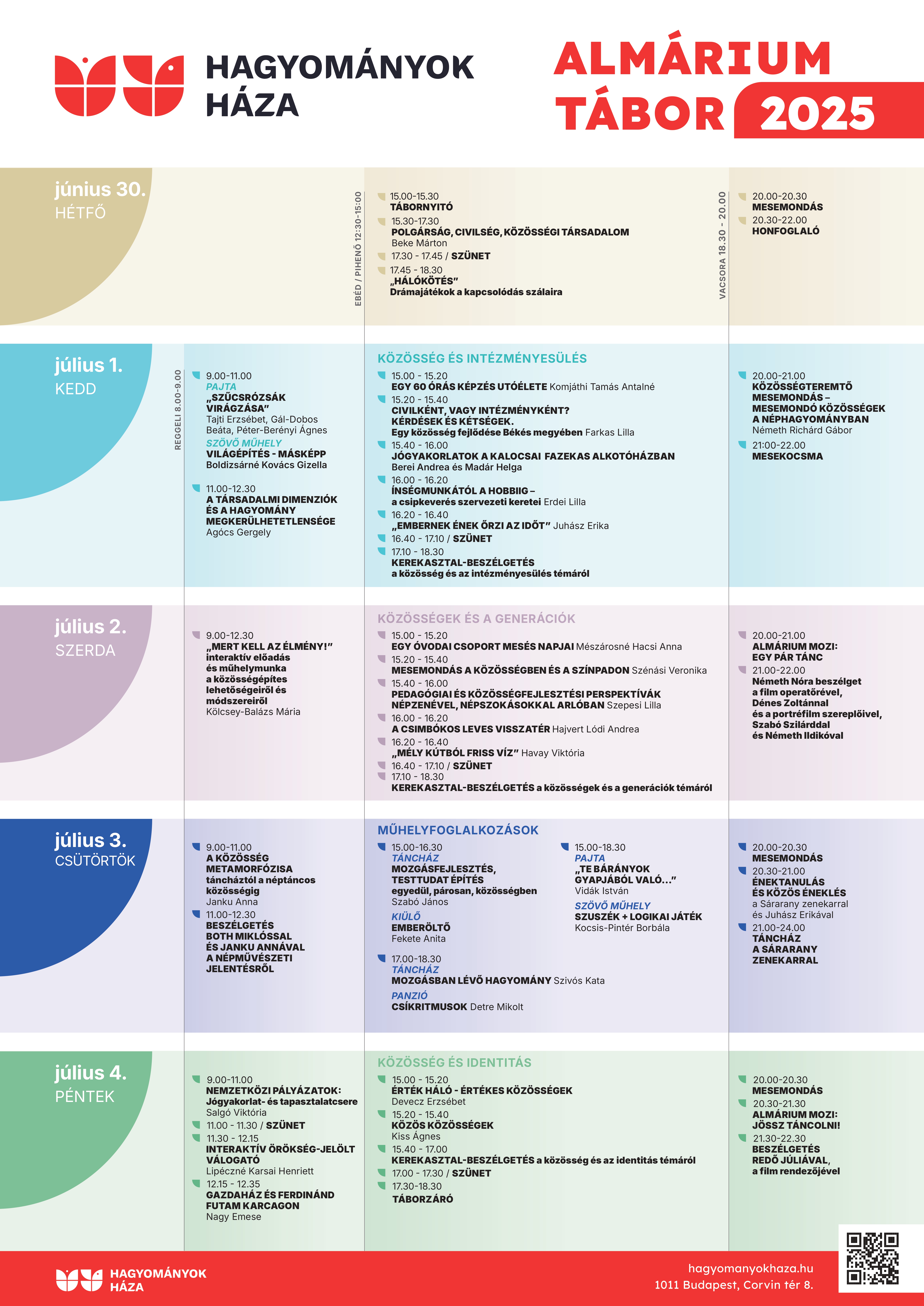- Rólunk
- Programok
-
Tevékenységeink
- Képzés
- Tudomány
- Minősítés
- Koordináció
- Komplex közösségi élmény
- Kiemelt projektek
- Magyar Állami Népi Együttes
- Magyar Népi Iparművészeti Múzeum
